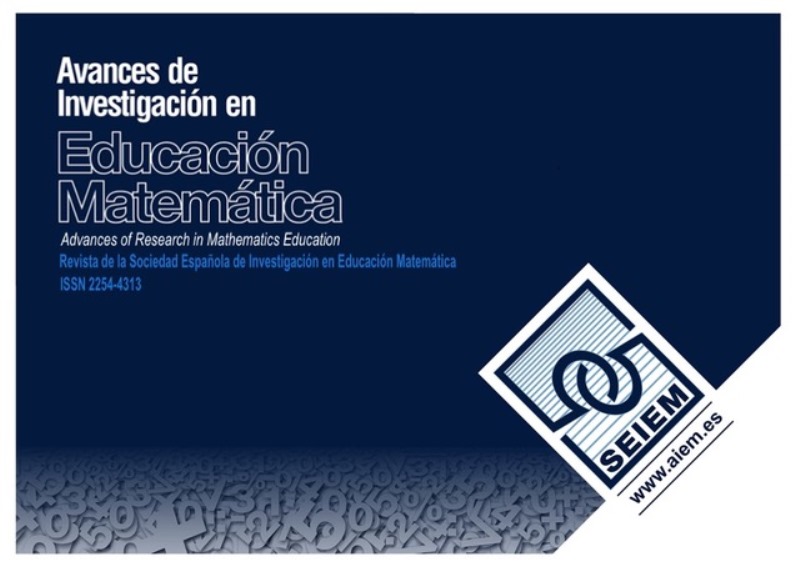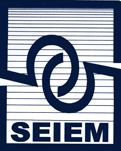Mathematical Connections Associated with the Linear Equation Made by High School Students
DOI:
https://doi.org/10.35763/aiem25.4616Keywords:
Mathematical connections, Linear equations, Thematic analysis, Algebra, Learning experienceAbstract
This study aimed to identify the mathematical connections made by four Mexican students in the first semester of high school when they solved tasks that involved linear equations. This research is qualitative, specifically, it is a case study that uses mathematical connections as a conceptual framework. To collect the data, five tasks mediated by the GeoGebra software were applied and the moments in which some of the students’ responses were socialized were videorecorded. These data were analyzed using thematic analysis. The results showed that the students made the extra-mathematical connection of modeling and the intra-mathematical connections of feature, meaning, different representations, and procedural, with the last two being the most frequent. Finally, it is stated that the use of the balance model, in tasks mediated by GeoGebra and that promote mathematical connections, contributes to students analyzing the relationship of equality when working with linear equations.
Downloads
References
Aguilar, S., & Barroso, O. (2015). La triangulación de datos como estrategia en investigación educativa. Pixel-bit. Revista de medios y educación, 47, 73-88. https://doi.org/10.12795/pixelbit.2015.i47.05
Andonegui, M. (2007). Introducción al álgebra. Serie desarrollo del pensamiento matemático, 2007/19. UNESCO. http://scioteca.caf.com/handle/123456789/529
Atteh, E., Andam, E., & Amoako, J. (2017). The Impact of using balance model in teaching linear equation. International Journal Article, 11(3), 1-12. https://doi.org/10.9734/ACRI/2017/35310
Braun, V., & Clarke, V. (2012). Thematic analysis. En H. Cooper (Ed.), Handbook of Research Methods in Psychology (pp. 57-71). American Psychological Association. https://doi.org/10.1037/13620-004
Businskas, A. (2008). Conversations about connections: How secondary mathematics teachers conceptualize and contend with mathematical connections. Tesis de doctorado no publicada. Simon Fraser University.
Campo-Meneses, K. G., & García-García, J. (2020). Explorando las conexiones matemáticas asociadas a la función exponencial y logarítmica en estudiantes universitarios colombianos. Educación Matemática, 32(3), 209-240. https://doi.org/10.24844/em3203.08
Campo-Meneses, K. G., & García-García, J. (2021). La comprensión de las funciones exponencial y logarítmica: una mirada desde las conexiones matemáticas y el Enfoque Ontosemiótico. PNA, 16(1), 25-56. https://doi.org/10.30827/pna.v16i1.15817
Campo-Meneses, K. G., & García-García, J. (2023). Conexiones matemáticas identificadas en la clase sobre funciones exponencial y logarítmica. Bolema: Boletim de Educação Matemática, 37(76), 849-871.
https://doi.org/10.1590/1980-4415v37n76a22
Chavarría, G. (2014). Dificultades en el aprendizaje de problemas que se modelan con ecuaciones lineales: El caso de estudiantes de octavo nivel de un colegio de Heredia. Uniciencia, 28(2), 15-44.
Dolores, C., & García-García, J. (2017). Conexiones intramatemáticas y extramatemáticas que se producen al resolver problemas de cálculo en contexto: un estudio de casos en nivel superior. Bolema: Boletim de Educação Matemática, 31(57), 158-180. http:// doi.org/10.1590/1980-4415v31n57a08
Eli, J., Mohr-Schroeder, M. J., & Lee, C. W. (2013). Mathematical connection and their relationship to mathematics knowledge for teaching geometry. School Science and Mathematics, 113(3), 120-134. https://doi.org/10.1111/ssm.12009
Esquinas, A. (2009). Dificultades de aprendizaje del lenguaje algebraico: del símbolo a la formalización algebraica: aplicación a la práctica docente. Tesis doctoral no publicada. Universidad Complutense de Madrid.
Evitts, T. (2004). Investigating the mathematical connections that preservice teachers use and develop while solving problems from reform curricula. Tesis de doctorado no publicada. Pennsylvania State University College of Education.
Garbín, S. (2005). ¿Cómo piensan los alumnos entre 16 y 20 años el infinito? La influencia de los modelos, las representaciones y los lenguajes matemáticos. Revista Latinoamericana de Investigación en Matemática Educativa, 8(2), 169-193. https://www.redalyc.org/pdf/335/33580205.pdf
García-García, J. (2019). Escenarios de exploración de conexiones matemáticas. NÚMEROS, 100, 129-133.
García-García, J., & Dolores-Flores, C. (2018). Intra-mathematical connections made by high school students in performing Calculus tasks. International Journal of Mathematical Education in Science and Technology, 49(2), 227-252. https://doi.org/10.1080/0020739X.2017.1355994
García-García, J., & Dolores-Flores, C. (2021). Pre-university students’ mathematical connections when sketching the graph of derivative and antiderivative functions. Mathematics Education Research Journal, 33(1), 1-22. https://doi.org/10.1007/s13394-019-00286-x
Jaijan, W., & Loipha, S. (2012). Making mathematical connections with transformations using open approach. HRD Journal, 3(1), 91-100.
https://so01.tci-thaijo.org/index.php/HRDJ/article/view/11305
Kaplan, R., & Alon, S. (2013). Using technology to teach equivalence. Teaching Children Mathematics, 19(6), 382-389. https://doi.org/10.5951/teacchilmath.19.6.0382
Lehmann, C. (2004). Álgebra. Limusa.
Mengistie, S. (2020). Enhancing Students’ Understanding of Linear Equation with One Variable Through Teaching. International Journal of Trends in Mathematics Education Research, 3(2), 69-80. https://doi.org/10.33122/ijtmer.v3i2.148
Muñoz, M., & Ríos, C. (octubre de 2008). Nociones básicas sobre álgebra: Análisis de las dificultades presentadas por los estudiantes en los procesos de aprendizaje de los conceptos básicos sobre álgebra. IX Encuentro Colombiano de Matemática Educativa, Valledupar, Colombia.
Navia, L. (2017). Representaciones semióticas del concepto de ecuación lineal con una variable a partir de la implementación de un juego didáctico. Revista Amazonia Investiga, 6(11), 38-52.
NCTM. (2000). Principles and standards for school mathematics. National Council of Teachers of Mathematics.
Otten, M., Van den Heuvel-Panhuizen, M., & Veldhuis, M. (2019). The balance model for teaching linear equations: a systematic literature review. International Journal of STEM Education, 6(30), 1-21. https://doi.org/10.1186/s40594-019-0183-2
Rodríguez-Nieto, C., Rodríguez-Vásquez, F., & Font, V. (2022). A new view about connections: the mathematical connections established by a teacher when teaching the derivative. International Journal of Mathematical Education in Science and Technology, 53(6), 1231-1256, https://doi.org/10.1080/0020739X.2020.1799254
Rodríguez-Nieto, C., Rodríguez-Vásquez, F., Font, V., & Morales-Carballo, A. (2021). Una visión desde la red de teorías TAC-EOS sobre el papel de las conexiones matemáticas en la comprensión de la derivada. Revemop, 3, 1-32. https://doi.org/10.33532/revemop.e202115
Segura, S. (2004). Sistemas de ecuaciones lineales: una secuencia didáctica. RELIME: Revista Latinoamericana de Investigación en Matemática Educativa, 7(1), 49-78.
Soto, E. (2021). Glosario ilustrado de matemáticas escolares. Aprende Matemáticas.
Suh, J. & Moyer, P. (2007). Developing students’ representational fluency using virtual and physical algebra balances. Journal of Computers in Mathematics and Science Teaching, 26(2), 155-173.
Vlassis, J. (2002). Hindrance or support for the solving of linear equations with one unknown. Educational Studies in Mathematics, 49(3), 341-359. https://www.jstor.org/stable/3483036
Warren, E., & Cooper, T. (2005). Young Children’s Ability to Use the Balance Strategy to Solve for Unknowns. Mathematics Education Research Journal, 17(1), 58-72.
Downloads
Published
How to Cite
Issue
Section
License
Copyright (c) 2024 Gabriel Barragán Mosso, Karen Gisel Campo-Meneses, Javier García-García

This work is licensed under a Creative Commons Attribution 4.0 International License.
The articles published in this journal are under a license Creative Commons: By 4.0 España from number 21 (2022).
Authors who publish with this journal agree to the following terms:
- Authors retain copyright and keep the acknowledgement of authorship.
- The texts published in this journal are – unless indicated otherwise – covered by the Creative Commons Attribution 4.0 international licence. You may copy, distribute, transmit and adapt the work, provided you attribute it (authorship, journal name, publisher) in the manner specified by the author(s) or licensor(s). The full text of the licence can be consulted here: http://creativecommons.org/licenses/by-nc/4.0.
- Authors are able to enter into separate, additional contractual arrangements for the non-exclusive distribution of the journal's published version of the work (e.g., post it to an institutional repository or publish it in a book), with an acknowledgement of its initial publication in this journal.
- Authors are permitted and encouraged to post their work online (e.g., in institutional repositories or on their website) prior to and during the submission process, as it can lead to productive exchanges, as well as earlier and greater citation of published work (See The Effect of Open Access).









